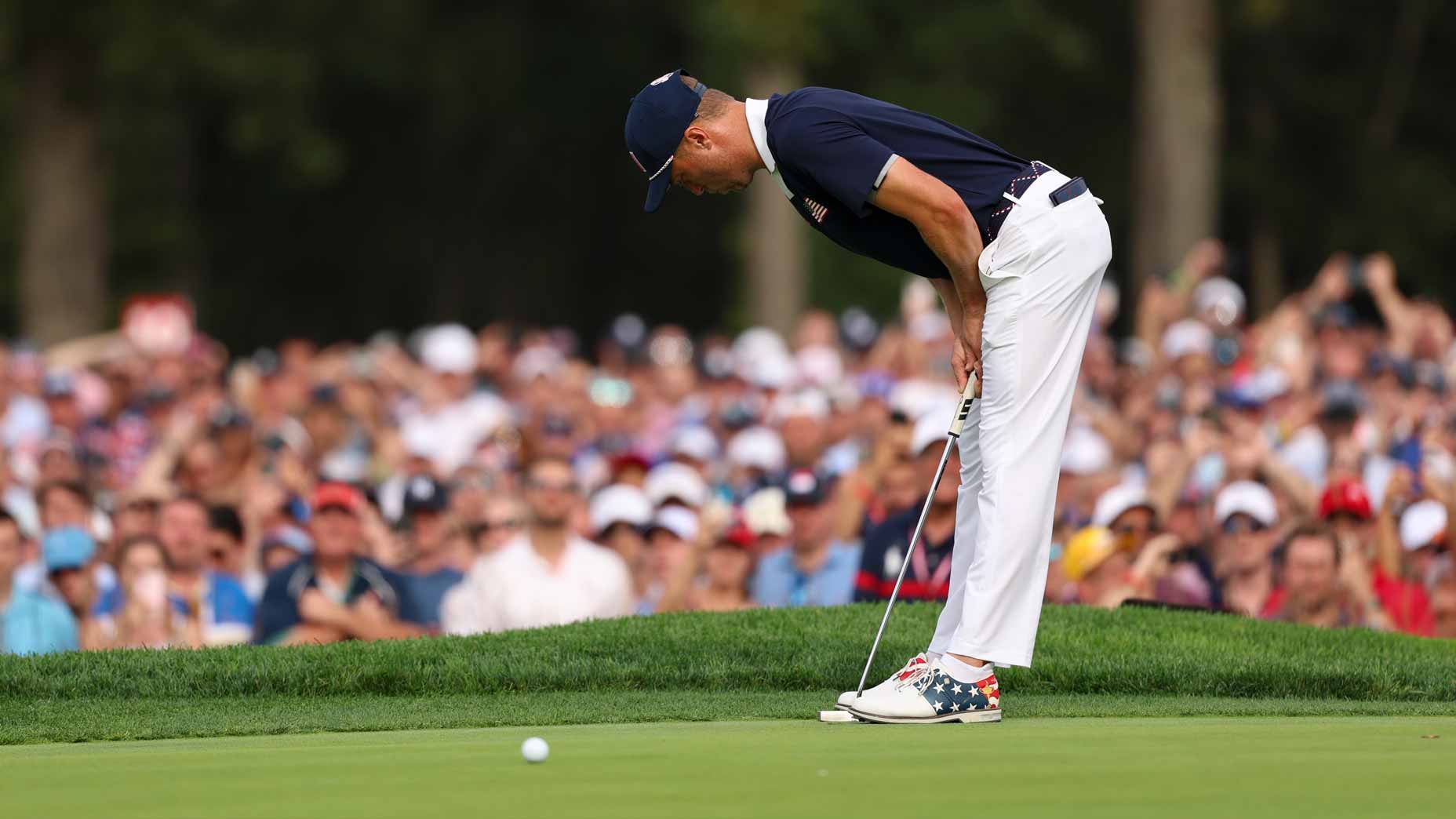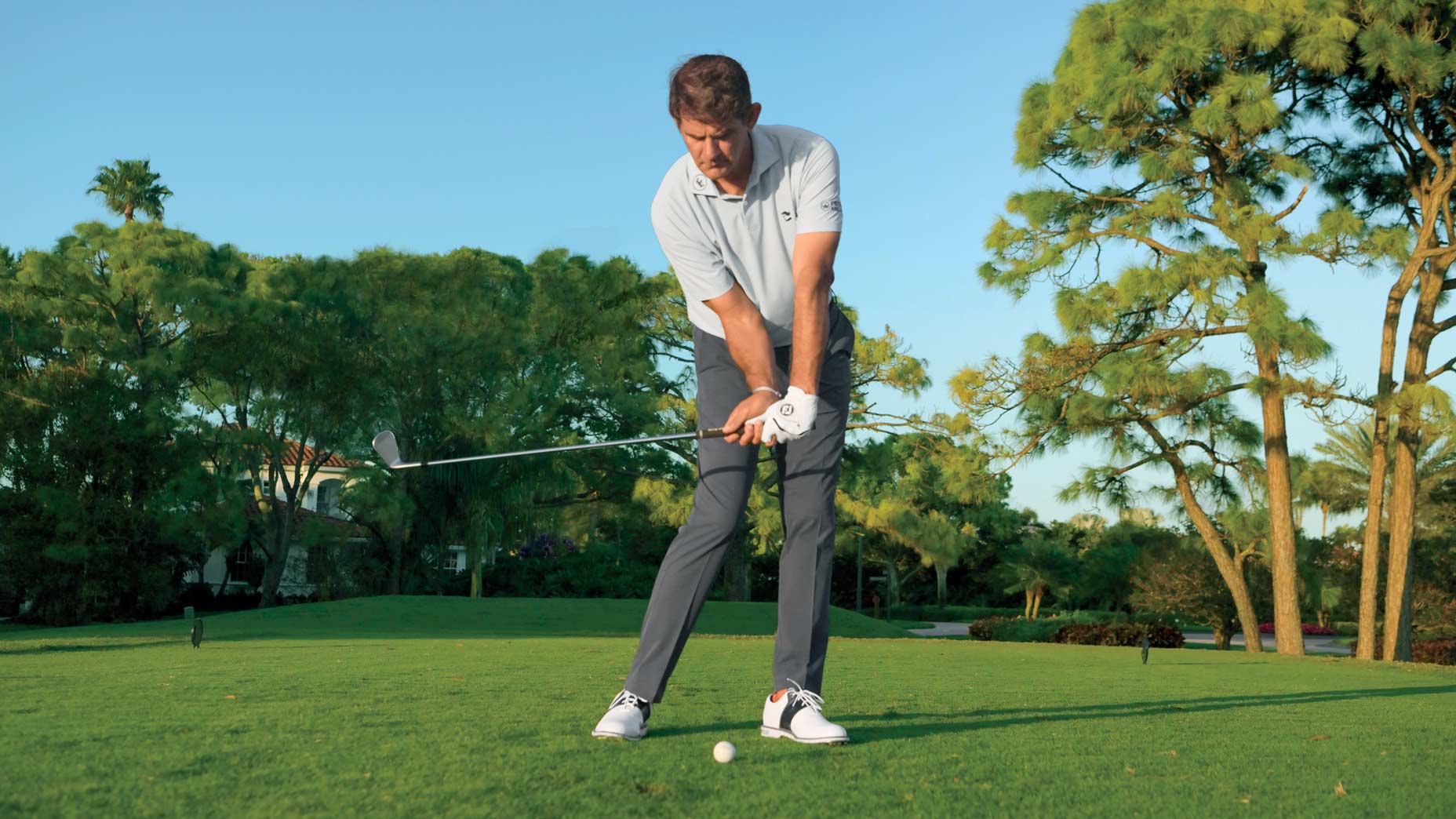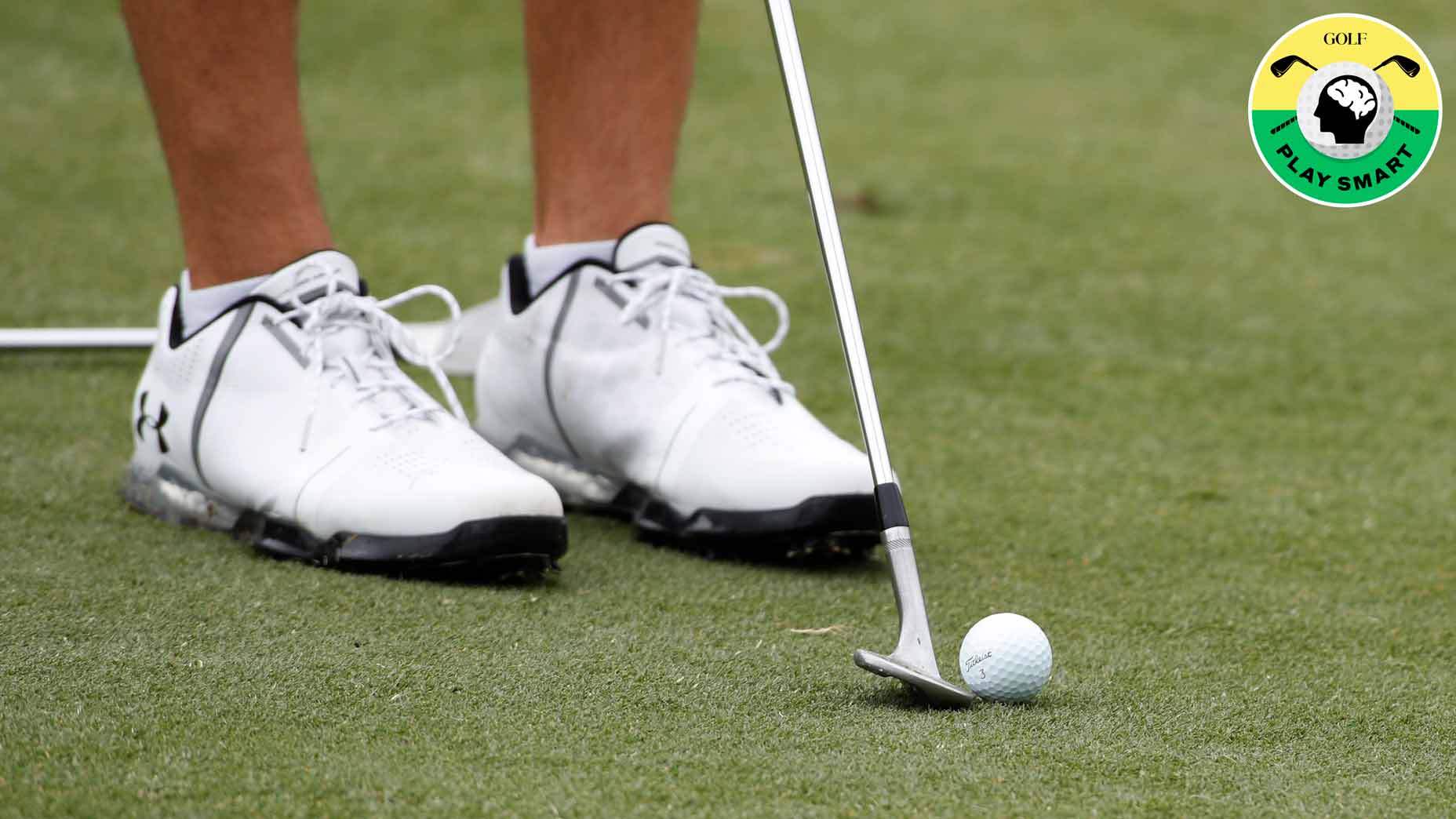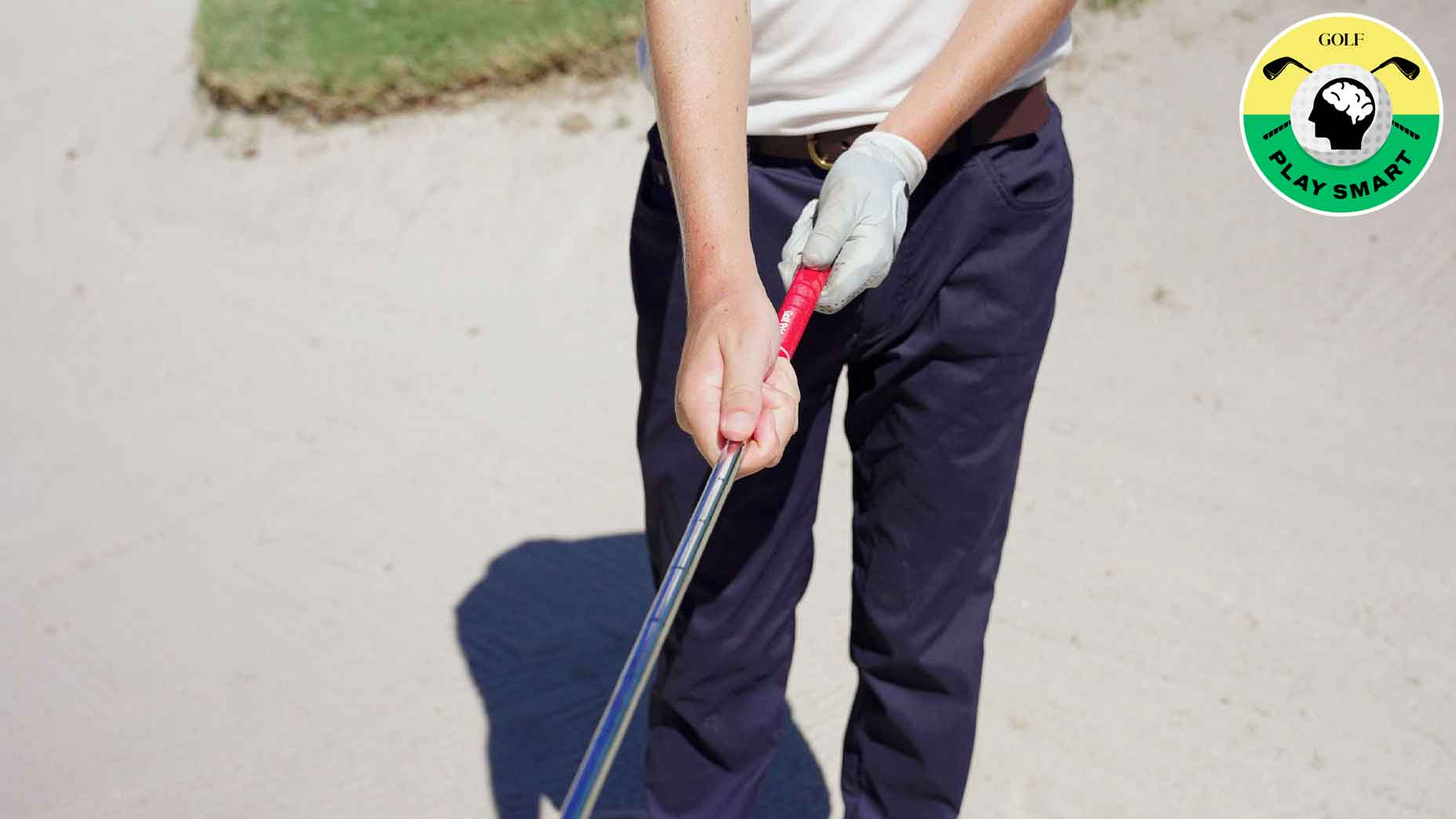Welcome to Play Smart, a regular GOLF.com game-improvement column that will help you become a smarter, better golfer.
If you want to make more birdies, you’ve got to hit it close with your short irons and wedges. It’s no surprise that when you look at PGA Tour stats, you’ll see a strong correlation between SG: Approach the Green and Birdie Average.
Take Justin Thomas, for example. He ranks eighth on Tour this season in SG: Approach at .852 and second on Tour with a Birdie Average of 4.8 per round. Making birdies is all about knocking it close.
Knocking it stiff with the short clubs is all about controlling the club path and having solid clubface control. For more on the former, we can take learn a lot from Thomas’ favorite ball-striking drill.
JT’s favorite drill
Having a repeatable club path is crucial if you want to strike the ball with any sort of consistency. When measuring club path with a Trackman, or any other launch monitor, you can see the direction the clubhead is moving at impact relative to the target line.
Given Thomas’ swing characteristics, it’s important that he’s swinging a little bit out to in. Not only does this path feel good for him, it also works well with other matchups he has working in the swing.
“My tendency is to get from the inside,” Thomas says. “And I like to cut the ball, so swinging from the inside is not good.”
In an effort to groove that outside-in club path, Thomas relies on what he calls his favorite drill.
The setup for this drill is simple and only requires three balls. He sets the first ball up in his typical ball position. Then he lines the second ball up a few inches behind the first ball and a few inches inside his target line. The third ball he places a few inches in front of the first ball and a few inches outside the target line.
The goal of this drill is simple. All he’s trying to do is swing and hit the first ball without striking either of the other two balls.
“If I have something there, I just have to miss it,” Thomas says. “If I miss it, that means I’m swinging far enough left.”
With the two other balls serving as gates, Thomas has a great physical barrier to keep him from swinging too far from the inside. And the beauty of it is that if he ever gets too far outside, all he has to do is mirror the position of the balls to promote an inside-out path.










